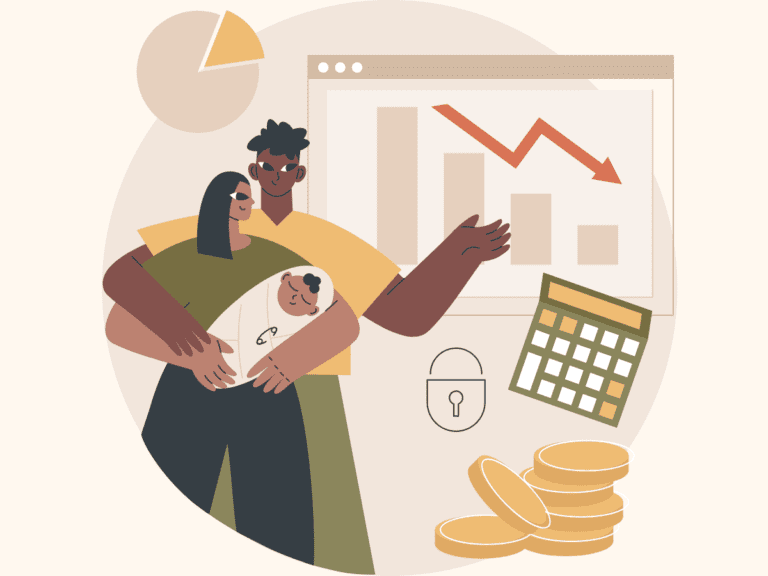How to Budget Money Smartly To Enjoy Financial Success
First things first, what is budgeting? Simply put, budgeting is creating a plan for your money. It involves taking a detailed look at your income and expenses and making conscious decisions about how you want to spend and save your money. How to budget money smartly?
Budgeting is not just about tracking expenses and cutting back on unnecessary spending. It’s about being intentional with your money and making sure you’re allocating your resources in a way that aligns with your goals and priorities.
Now, why is budgeting important? Well, there are many reasons! For starters, it can help you avoid living paycheck to paycheck and help you build an emergency fund. It can also help you pay off debt faster, save for big purchases like a house or car, and plan for retirement.
Without a budget, it’s easy to overspend and find yourself in a financial bind. But with a budget, you can see exactly where your money is going and adjust as needed. It can help you identify areas where you may be overspending and find ways to cut back, ultimately leading to more financial freedom.
Let’s take a practical example. Say you’re currently spending $200 a month on dining out, but you’ve set a goal to save for a vacation next year. Creating a budget and allocating $100 monthly to eating out can save an additional $100 monthly for your vacation fund. This minor adjustment can add up over time and help you reach your financial goals faster.
Budgeting is a crucial aspect of managing your finances. It’s not always easy and can require some discipline and sacrifice, but the benefits are well worth it. You can create a financial plan that works for you and your goals by being intentional with your money.
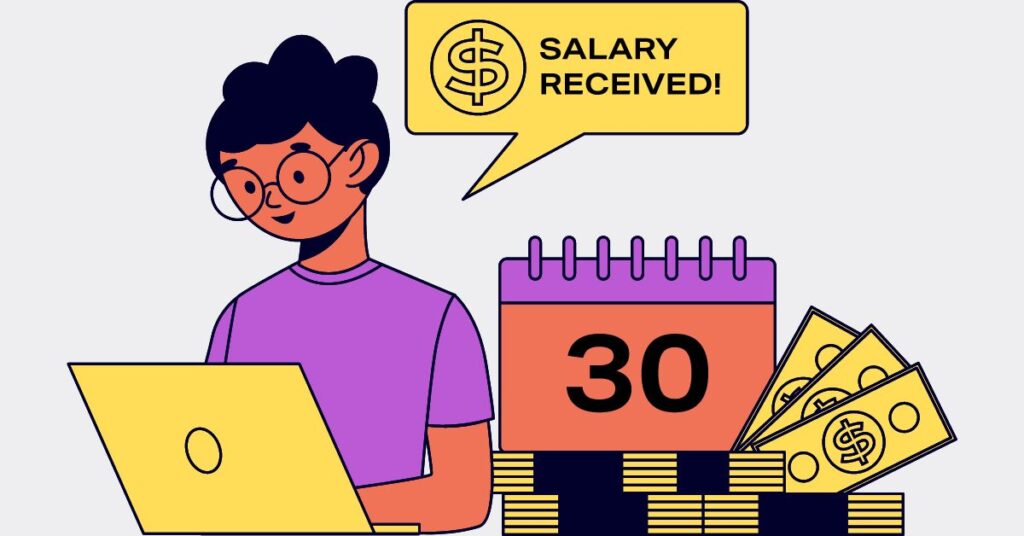
How to Budget Money – Determine Your Income
Your income is the money you earn from your job or other sources. It’s important to know exactly how much money you have coming in each month to plan your expenses accordingly.
Calculating your total income may seem straightforward, but there are a few things to consider. First, if you have a salaried job, you likely receive a set amount each month. However, your income may fluctuate monthly if you’re an hourly employee or have a variable income. In this case, it’s essential to calculate your average monthly income based on your earnings over the past few months.
Next, you’ll want to identify all of your sources of income. This may include your salary or hourly wages, any bonuses or commissions you receive, and any income from side hustles or investments. By accounting for all your income sources, you’ll better understand your monthly income.
It’s also important to consider any irregular income you may receive. For example, working a seasonal job or receiving a tax refund can impact your monthly income. You’ll want to factor in these sources of income and adjust your budget accordingly.
Let’s look at a practical example. Say you work full-time and earn a salary of $50,000 per year. Your monthly income would be $4,166.67 ($50,000 / 12). However, you also receive a quarterly bonus of $500. In this case, you would add $166.67 to your monthly income calculation ($500 / 3 = $166.67), making your total monthly income $4,333.34.
Determining your income is an essential step in creating a budget. By accurately calculating your income and factoring in any irregular income sources, you’ll better understand how much money you have to work with each month. This will help you make informed decisions about your expenses and savings goals.

How to Budget Money – List Your Expenses
Your expenses are the things you spend money on each month, from bills and rent to groceries and entertainment. To create an adequate budget, you must identify and categorize all your expenses based on their importance and necessity.
The first step is to identify your fixed expenses, the bills, and expenses that stay the same each month. This may include rent or mortgage payments, car payments, insurance, and subscription services like Netflix or Hulu. These expenses are typically non-negotiable and must be accounted for in your budget.
Next, you’ll want to identify your variable expenses. These expenses, such as groceries, entertainment, and transportation, can fluctuate monthly. It’s important, to be honest with yourself about how much you’re spending in each category, as these expenses can add up quickly.
One way to identify your variable expenses is to track your spending for a few months. This can help you see where your money is going and identify areas where you may be overspending. Once you understand your variable expenses better, you can create a budget that allocates money toward these categories.
Let’s take a practical example. Say you have the following monthly expenses: rent ($1,000), car payment ($300), insurance ($100), groceries ($400), entertainment ($200), and transportation ($100). Your total fixed expenses would be $1,400 ($1,000 + $300 + $100), and your total variable expenses would be $700 ($400 + $200 + $100).
Once you’ve listed your expenses, you can categorize them based on their importance and necessity. For example, rent and car payments are essential expenses you can’t live without, while entertainment expenses may be less critical. By prioritizing your expenses, you can create a budget that first allocates money toward your most essential expenses.
Listing your expenses is a crucial step in creating a budget. You can create a budget that reflects your financial goals and priorities by identifying your fixed and variable expenses and categorizing them based on their importance and necessity.
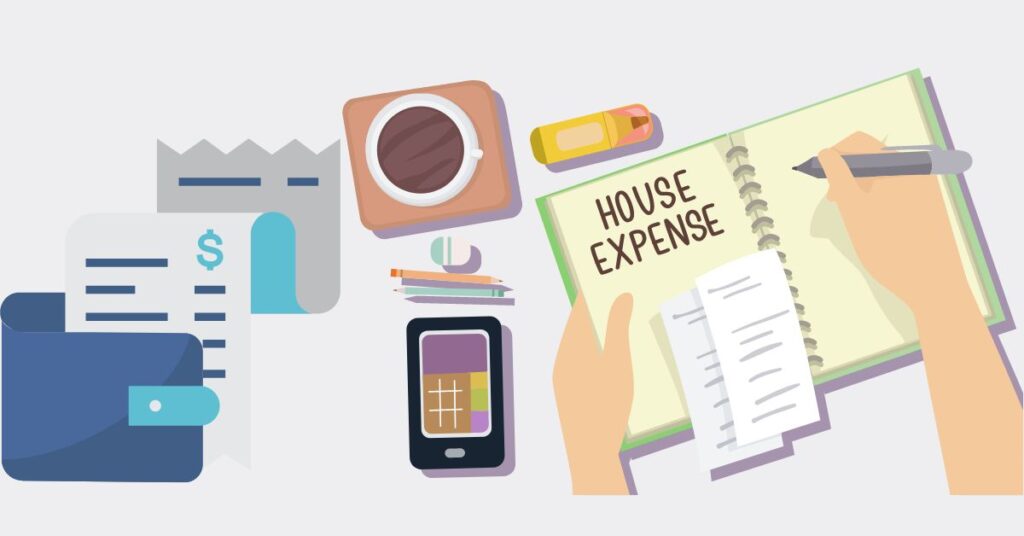
Categorize Your Expenses – How to Budget Money
Categorizing your expenses can help you prioritize your spending and identify areas where you can cut back.
Here are some common categories that you can use to categorize your expenses:
- Housing: This category includes your rent or mortgage payment, utilities, and home maintenance expenses.
- Transportation: This category includes car payments, gas, insurance, and maintenance expenses.
- Food: This category includes groceries, eating out, and snacks.
- Entertainment: This category includes expenses related to hobbies, movies, concerts, and other forms of entertainment.
- Personal Care: This category includes expenses related to personal grooming, such as haircuts, makeup, and skincare products.
- Health Care: This includes doctor visits, medication, and health insurance expenses.
- Debt Repayment: This category includes credit card payments, student loan payments, and any other debts you may have.
- Savings: This category includes any money you’re setting aside for future expenses, such as a down payment on a house or a vacation.
- Miscellaneous: This category includes other expenses that don’t fit into the different categories, such as gifts or charitable donations.
It’s important to note that your categories may vary based on your spending habits and financial goals. For example, if you’re trying to save money for a specific purpose, like a down payment on a house, you may want to create a separate category for that expense.
Let’s take a practical example. Say you have the following expenses:
- Rent: $1,000
- Car payment: $300
- Groceries: $400
- Eating out: $100
- Gym membership: $50
- Haircuts: $40
- Doctor visits: $50
- Credit card payment: $100
- Savings: $200
You could categorize these expenses as follows:
- Housing: $1,000
- Transportation: $300
- Food: $500
- Entertainment: $100
- Personal Care: $40
- Health Care: $50
- Debt Repayment: $100
- Savings: $200
- Miscellaneous: $0
Categorizing your expenses can help you prioritize your spending and identify areas where you can cut back. By creating categories that reflect your spending habits and financial goals, you can make a budget that works for you.

Create a Budget Plan
Now that you have identified and categorized your expenses, it’s time to create a budget plan. A budget plan is a financial plan that helps you manage your money by setting spending limits and identifying areas where you can save.
Here are the steps to create a budget plan:
- Determine your total income: Start by adding up all of your sources of income, including your salary, any side hustles, and any other sources of income.
- Calculate your total expenses: Add up all your monthly expenses, including your fixed and variable expenses. Use the categories you created earlier to help you stay organized.
- Subtract your expenses from your income: Subtract your total expenses from your total income to determine your discretionary income. This is the amount of money you have left over each month after paying your bills.
- Set spending limits: Based on your discretionary income, set spending limits for each category. This can help you stay within your budget and avoid overspending.
- Track your spending: Once you have set spending limits, track your spending throughout the month to ensure you stay within your budget. You can use a spreadsheet or a budgeting app to help you keep track of your spending.
- Adjust your budget as needed: If you’re consistently overspending in a specific category, you may need to adjust your budget to allocate more money to that category.
Let’s take a practical example. Say your total income is $3,000 per month, and your total expenses are as follows:
- Housing: $1,000
- Transportation: $300
- Food: $500
- Entertainment: $100
- Personal Care: $40
- Health Care: $50
- Debt Repayment: $100
- Savings: $200
Your total expenses would be $2,290, leaving you with $710 in monthly discretionary income. You could set spending limits for each category as follows:
- Housing: $1,000
- Transportation: $300
- Food: $400
- Entertainment: $50
- Personal Care: $40
- Health Care: $50
- Debt Repayment: $100
- Savings: $200
To track your spending, use a spreadsheet or a budgeting app to track how much you spend in each category throughout the month. If you’re consistently overspending in a particular category, you may need to adjust your budget to allocate more money to that category.
Creating a budget plan is a crucial step in managing your finances. By setting spending limits and tracking your spending, you can stay within your budget and avoid overspending. Remember to adjust your budget as needed to reflect changes in your income and expenses.

Track Your Spending – How to Budget Money
Tracking your spending is an integral part of budgeting as it helps you stay accountable to your budget plan and see where your money is going. It can also help you identify areas where you may be overspending and where you can cut back.
Here are some tips on how to effectively track your spending:
- Use a budgeting app: There are many budgeting apps available that can help you track your spending. These apps often allow you to connect your bank accounts and credit cards, so your transactions are automatically recorded. Some popular budgeting apps include Mint, YNAB (You Need a Budget), and Personal Capital.
- Keep receipts and record transactions: If you prefer to track your spending manually, you can keep receipts and record transactions in a notebook or spreadsheet. Make sure to record each expense’s date, amount, and category.
- Categorize your expenses: Just like when creating your budget plan, categorizing your expenses can help you see where your money is going. You can use the same categories you used when creating your budget plans, such as housing, transportation, food, entertainment, personal care, health care, debt repayment, and savings.
- Check your budget regularly: Make it a habit to check your budget regularly, at least once a week, to ensure you’re staying on track. This will also help you catch any errors or fraudulent charges on your accounts.
- Be honest with yourself: Tracking your spending requires honesty and transparency. Don’t try to hide or justify overspending in a certain category. Instead, look for ways to cut back on that area or adjust your budget plan accordingly.
For example, let’s say you set a monthly spending limit of $400 for food but consistently spend $500. By tracking your spending, you can see that you’re overspending in this category and may need to adjust your budget plan to either increase your spending limit for food or find ways to cut back, such as meal prepping or buying groceries in bulk.
Tracking your spending is a crucial part of budgeting. Whether you use a budgeting app or keep track manually, categorizing your expenses and checking your budget regularly can help you stay on track and reach your financial goals. Remember to be honest with yourself and adjust as needed to ensure you stay within your budget.
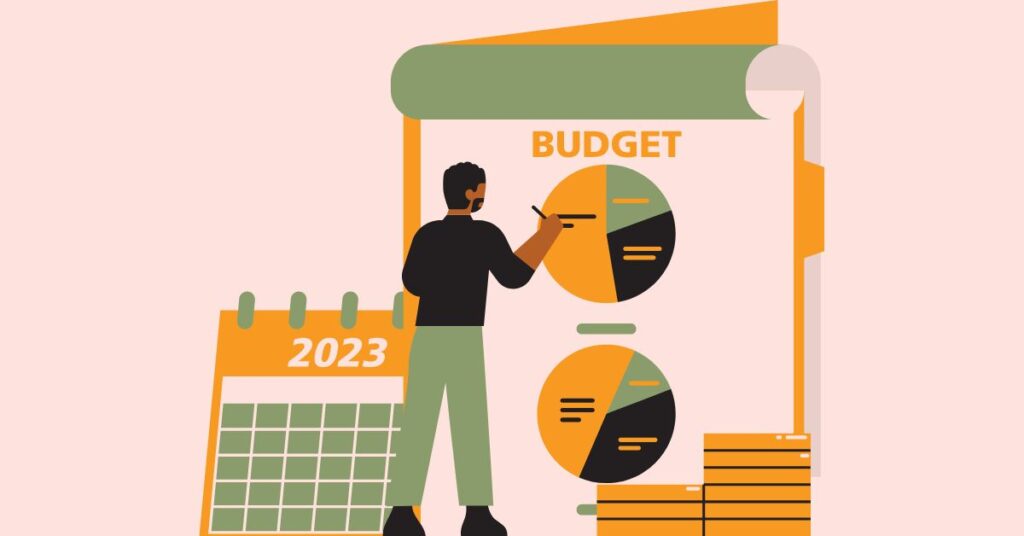
Tips for Sticking to Your Budget
Creating a budget is one thing, but sticking to it can be challenging. However, with some discipline and the right mindset, you can successfully stick to your budget and achieve your financial goals. Here are some tips to help you stay on track:
- Set realistic goals: When creating your budget plan, ensure your goals are realistic and achievable. If your goals are too ambitious, you may become discouraged and abandon your budget plan. Start small and gradually work your way up as you become more comfortable with your budget.
- Prioritize your spending: When categorizing your expenses, prioritize your spending based on what’s most important to you. For example, if saving for a down payment on a house is a top priority, allocate more of your budget towards savings and less towards discretionary spending.
- Avoid impulse purchases: Impulse purchases can quickly derail your budget. To avoid impulse purchases, list what you need before shopping and stick to it. If you see something you want, but it’s not on your list, wait a day or two before making the purchase to see if it’s something you really need.
- Use cash for discretionary spending: If you’re overspending in discretionary categories like entertainment or dining out, consider using cash instead of your credit or debit card. Having a set amount for these categories can help you stay within your budget and avoid overspending.
- Find cheaper alternatives: Find more affordable options for things you regularly purchase. For example, if you’re spending a lot on coffee, consider making it at home instead of buying it at a coffee shop. Similarly, if you’re spending a lot on cable TV, consider switching to a cheaper streaming service.
- Use budgeting tools: Many budgeting tools are available to help you stay on track with your budget. For example, you can use apps that track your spending or set up automatic transfers to your savings account each month.
- Stay motivated: Sticking to a budget can be challenging, but staying motivated and focused on your goals is essential. Reward yourself when you reach certain milestones, like paying off a credit card or saving a certain amount.
For example, let’s say your goal is to save $10,000 for a down payment on a house. To achieve this goal, you set a budget of $2,000 per month for living expenses and discretionary spending. Using cash for discretionary spending, finding cheaper alternatives, and staying motivated, you can stick to your budget and save $10,000 in five months.
Sticking to your budget requires discipline and a mindset shift. By setting realistic goals, prioritizing your spending, avoiding impulse purchases, finding cheaper alternatives, using budgeting tools, and staying motivated, you can successfully stick to your budget and achieve your financial goals.

Essential points on how to budget money
Budgeting your money is an essential skill that everyone should learn. It helps you take control of your finances, achieve your goals, and avoid financial stress. Here are some critical points to keep in mind when budgeting your money:
- Know your income: Before budgeting, you must know how much money you bring in each month. This includes your salary, any side hustle income, and any other sources of income you may have.
- List your expenses: Next, make a list of all your expenses. This includes your fixed expenses like rent, utilities, and insurance and variable expenses like groceries, entertainment, and clothing.
- Categorize your expenses: Categorize your expenses into housing, transportation, food, entertainment, and savings. This will help you see where your money is going and adjust as needed.
- Create a budget plan: Once you understand your income and expenses, it’s time to create a budget plan. Start by prioritizing your expenses and allocating your income towards each category. Be sure to set aside money for savings and emergencies as well.
- Track your spending: Keep track of your spending each month to ensure you stay within your budget. Use budgeting tools like apps or spreadsheets to make this easier.
- Adjust as needed: Your budget isn’t set in stone. If you find that you’re overspending in one category or need to allocate more money towards savings, make adjustments to your budget plan as required.
- Stick to your budget: Sticking to your budget requires discipline and a mindset shift. Use tips like avoiding impulse purchases, finding cheaper alternatives, and using budgeting tools to help you stay on track.
For example, let’s say your monthly income is $3,000, and your expenses include $1,000 for rent, $300 for utilities, $200 for groceries, $100 for transportation, $200 for entertainment, and $500 for savings. You would allocate your income towards each category, prioritizing your expenses and setting aside money for savings. You can stick to your budget and achieve your financial goals by tracking your spending and adjusting as needed.
In summary, budgeting your money requires a good understanding of your income and expenses, categorizing your expenses, creating a budget plan, tracking your spending, and adjusting as needed. By sticking to your budget and making mindful choices about your spending, you can take control of your finances and achieve your goals.
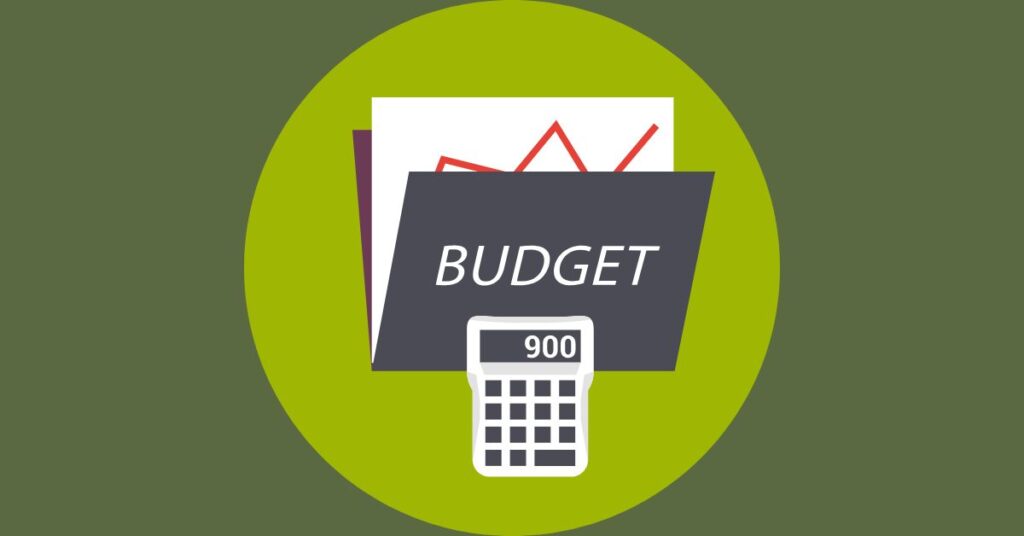
Start A Budget
Now that you understand how to budget your money better, it’s time to implement it. Take the first step today by creating a budget plan using the tips and strategies discussed. Remember, budgeting takes time and discipline, but the benefits are worth it in the long run.
Start by setting a financial goal and work towards achieving it by sticking to your budget. With a little effort and dedication, you can take control of your finances and achieve financial freedom. So, take action today and start budgeting your money!


